Introduction of Cantilever Bridge
Important Point
Cantilever Bridge is a special type of bridge which is constructed by using Cantilever members or the structures that project horizontally.
In this article, you will get to know about cantilever bridges, type of cantilever bridge, and the Advantages and Disadvantages of cantilever bridges.
What Does Cantilever Means?
The cantilever is a type of support or a long projecting beam or girder which is generally fixed at only one end and free at another end.
What Is Cantilever Support?
Cantilever support is a rigid structural element which is extended towards the horizontal direction and supported only at one end. In general cases, the cantilever supports extend from a vertical flat surface such as a wall or other element which is firmly attached.
Also, Read: How Are Bridges Built
Cantilever Bridge
The Cantilever bridge is widely used all over the world for the construction of Major Bridges. The cantilever bridges come into existence because there is a need for construction of bridges without support. It is not possible to construct continuous Bridges with several supports.
There are some special conditions where the number of supports cannot be given, in that case, Cantilever Bridges are suitable.
With the help of proper construction material and perfect design of the bridge, a Steel Truss cantilever Bridge can span up to the length of 1500 feet. This type of bridges is generally used for pedestrians, vehicles and trains.
Cantilever bridges are best suitable for the construction of the bridges where spanning on a waterway is required without dividing it with the river piers.
It is very necessary that cantilever bridges should firmly be attached at one side so that it can carry the total superimposed load, which is coming from the free-standing side to avoid shear stress.
Cantilever bridges should be able to resist tensile stresses in the upper support of the cantilever bridge and the compression stresses in the lower support.
In some cases the length between two supports where Bridge has to be constructed it is very long which cannot be spanned by one cantilever on each side.
In such a situation, the special Beam Bridge or truss Bridge is placed between the arms of two cantilever which connects them into one Bridge. The type of bridge is known as Suspended Span Bridge.
The material which is used for the construction of the cantilever Bridge is Iron, Structural Steel and Prestressed concrete.
Cantilever structure has a maximum bending moment at the support and zero bending moment it at the free end So that the section at the Support should be Maximum to withstand the bending moment.
A Balance cantilever Bridges is another technique of spanning long distances between two points. In this case, engineer constructs the year in the middle side of the river or span.
In the first stage of the construction of the cantilever Bridge, the arms are connected to the shore.
The thin-walled circular Steel tubes are used as the piers for the construction of cantilever bridges. For the construction of long-span cantilever bridges, it is necessary that both strength and weight criteria should be satisfied.
To reduce the total weight of the long-span cantilever bridges, lightweight concrete is also sometimes used in the construction of the Cantilever Bridges.
The cantilever bridges also serve the purpose to provide the passage of pedestrians, Railways and vehicles through it from one end to another end.
Also, read: West Point Bridge Designer
Type of Cantilever Bridges
The cantilever bridges are mainly classified into two types.
- Balance Cantilever Bridges
- Continuous Cantilever Bridges
1. Balanced Cantilever Bridges
The Balanced Cantilever Bridge is one of the best Bridge without the need for falsework. Balanced cantilever bridges are constructed where the longer span is required.
Balance cantilever bridges are suitable were simply supported, or continuous frame type structures are not suitable. To construct continuous or simply supported bridges for the longer span required solid Foundation at greater than which is more expensive for the construction.
Balanced Cantilever Bridges are the combination of both simply supported structure and continuous structure.
The construction of the cantilever structure with only one cantilever the length should be made small otherwise there may be chances of uplift at another end.
Cantilever balance Bridge has advantages of both simply supported as well as the continuous structures. Cantilever balance Bridge required one line of bearings over the piers, which is similar to the continuous bridges.
This method of Balanced Cantilever Bridges is more helpful as compared to other construction where the temporary showing can disrupt the traffic.
Also, Read: What Is Bridge Pier | Type of Bridge Pier
2. Continuous Cantilever Bridges
The continuous cantilever bridges are the special types of bridges which are constructed by using two gantries from the opposite end of the abutments, which will be made in the centre to complete the structure.
To compensate for the absence of balanced cantilever, the Abutments should be made heavy. Continuous Cantilever bridges work as continuous beam feet span between two support with maintaining its Bending moment and Shear Strength throughout the beam.
Also, Read: Difference Between Bridge and Culvert | What Is Bridge | What Is Culvert
Advantages of Cantilever Bridges
- In the construction of the Cantilever bridges, the falsework is not required.
- Cantilever bridges can higher withstand the effects of Thermal Expansion.
- Cantilever bridges are suitable for the longest span.
- Cantilever bridges have multiple cantilever spans and can be immediately started from all the columns.
- Due to lack of supporting piers in the Cantilever Bridges, it gives extra flexibility to the style and geometry of the highway supported by this Bridge.
- The cantilever bridges are suitable for deep Rocky valleys and flood-prone areas where falsework is not possible.
- In the construction of cantilever bridges, support is required on only one side of its cantilever.
Disadvantages of Cantilever Bridges
- Cantilever Bridges experience a high amount of tension during the construction, which is known as a Negative moment.
- Cantilever bridges have to take care of its stability by balancing between compressive as well as tensile forces acting on it.
- Cantilever bridges are heavy, so it required larger and stronger support.
- Cantilever bridges are not suitable for Earthquake-prone areas.
- Construction of cantilever bridges is not suitable for excessive climate conditions.
- Construction and the Maintenance of the Cantilever bridges are complex.
Also, Read: Fish Ladder | What Is Fish Ladder | Types of Fish Ladder | Fish Ladders in Dams
Cantilever Bridge Facts
- The first cantilever bridge in the world was 38 metres long, which is also known as modern cantilever This Bridge was constructed by the engineer Heinrich Gerber in the year 1867.
- The most famous cantilever bridge in the world is the Forth Bridge. This Bridge held the world record of the longest pen in all over the world for the 29 years.
- Quebec Bridge is the longest span cantilever Bridge in all over the world which is 549 by length. It is the longest cantilever structure.
Cantilever Bridge
A cantilever bridge is a specific type of bridge. It is called a cantilever bridge because it is built using cantilevers. A cantilever is a structure that is only anchored at one of its ends. Its other end projects horizontally into space, and it is this end that helps support the bridge.
Cantilever Bridge Advantages
During the bridge’s construction, which is done from each support pier, navigation below the bridge is not obstructed. Bridges are frequently constructed across roads and challenging crossings, allowing uninterrupted traffic flow. Because the beams can be attached at the extremities of the cantilevers, the span (section of a bridge between two adjacent piers) of these bridges can be longer than traditional beams. Suspended truss bridges (assembled sections) are simple to raise and connect two cantilever spans. The deck (bridge surface) can be simply built-in segments, ensuring quality and regularity.
Disadvantages of Cantilever Bridge
Although cantilever bridges usually last for years, the potential for failure is greater when the bridges are not attached to the strong teeth found in the back of the mouth. may be damaged. Because they are anchored on only one side, the risk of cracking or debonding is slightly higher than other bridges.
Cantilever Bridge Pros and Cons
Pros of Cantilever Bridges
Here the list of advantages of Cantilever Bridges are as follows.
- The floor of the bridge is simply formed into sections to preserve uniformity and ensure high quality.
- It is less time-consuming, As multiple cantilever spans construction can be started simultaneously from all its columns.
- Navigation or passage under the bridge is not disturbed during the construction
process.
Cons of Cantilever Bridges
Here the list of disadvantages of Cantilever Bridges are as follows.
- A cantilever bridge requires a heavier structure to take care of its own stability by creating stability between compressive and tensile forces.
- During the construction of Cantilever bridges, they experience a high level of tension which is known as negative moments.
- Cantilever bridges cannot be constructed in extreme climate conditions due to the lack of multiple seasons.
- Cantilever bridges require advanced analysis to prevent future fatigue failure of elements and welds.
Advantages of a Cantilever Bridge
The Pros of Cantilever Bridges
- They are less invasive. Because they only require impacting one other tooth, less natural tooth surface is disturbed.
- They look natural.
- A cheaper alternative.
- Their longevity makes them attractive.
- The healthier alternative.
- They are easy to place.
Cantilever Bridge Facts
A cantilever bridge is generally made with three spans, of which the outer spans are both anchored down at the shore and cantilever out over the channel to be crossed. The central span rests on the cantilevered arms extending from the outer spans; it carries vertically.
Cantilever Bridge Features
Cantilever bridges can be built without false-works below nor temporary supporting towers and cables above. It is one of their great advantages. They are also of very rigid construction so they can carry large loads without threat for construction.
Advantage and Disadvantage of a Cantilever Bridge
Overall, cantilever bridges offer many advantages, including their versatility, strength, and ability to span long distances. However, these bridges are only suitable for some conditions, as the construction process can be complex and expensive and may not be suitable for carrying high loads.
What Are the Advantages of a Cantilever Bridge?
- Structural Stability
- Flexibility in Span Length
- Resistance to Tension
- Durability
- Cost-effectiveness
Cantilever Bridge Cons
Although cantilever bridges typically last for years, there is a higher chance of failure when bridges are not attached to the sturdier teeth found at the back of the mouth. Damage may occur. Because they are only anchored on one side, there is a slightly higher risk of cracking or debonding than with other bridges.
Cantilever Bridge Characteristics
- Support: Cantilever bridges rely on a support system that consists of a pier or a solid foundation at one end, known as the “fixed support.” This support provides the necessary stability for the bridge structure. The other end of the bridge extends without any intermediate supports, creating a cantilevered section.
- Structural Elements: Cantilever bridges typically consist of three main structural elements: the cantilever arms, the suspended span, and the anchor arms. The cantilever arms are the sections that extend from the fixed support towards the center of the bridge. The suspended span is the section that connects the two cantilever arms, and it is often supported by additional stays or cables. The anchor arms extend from the center of the bridge to the opposite side, providing additional support and balance.
- Tension and Compression: Cantilever bridges rely on a combination of tension and compression forces to distribute the weight of the bridge and provide structural stability. The cantilever arms are subjected to compression forces, while the suspended span experiences tension forces. This balance between tension and compression allows the bridge to support its own weight and any additional loads.
What Are Cantilever Bridges Used For?
Cantilever bridges are designed for road or rail traffic and typically built from structural steel or boxed girders made from prestressed concrete. The defining feature of a cantilever bridge is, well, a cantilever. Cantilevers are structures that project horizontally with support on only one end.
How Does a Cantilever Bridge Work?
A cantilever bridge works in the same way: the bottom part of each cantilever is anchored into the ground, while the upper end of the cantilever supports the bridge itself. Some cantilever bridges are small enough to use simple beams to support the bridge itself, like the Kingsgate Bridge in Durham.
Types of Cantilever Bridge
- Balanced Cantilever Bridges. The balanced cantilever bridge does not require any falsework.
- Continuous Cantilever Bridges. The continuous cantilever bridge is a truss bridge that extends across three or more supports without hinges or joints.
Are Cantilever Bridges Strong?
A cantilever bridge differs from other bridges in that it is only anchored in place on one side instead of two. Often used when there is only one adjacent tooth to support the bridge, they are almost entirely as strong as their traditional counterparts.
What Is the Purpose of a Cantilever Bridge?
Function. Cantilever Bridge. —A structure at least one portion of which acts as an anchorage for sustaining another portion which extends beyond the supporting pier. A simple cantilever span is formed by two cantilever arms extending from opposite sides of an obstacle to be crossed, meeting at the center.
What Is One Advantage and One Disadvantage of a Cantilever Bridge Design?
One advantage of a cantilever bridge design is its ability to span long distances without the need for intermediate supports or piers. This makes it suitable for crossing large bodies of water, wide valleys, or areas where it is difficult to construct intermediate supports.
One disadvantage of a cantilever bridge design is the complexity and cost associated with its construction. Cantilever bridges require careful engineering and precise construction techniques due to the unique balance of tension and compression forces.
Like this post? Share it with your friends!
Suggested Read –
- What Is a Flyover Bridge
- Difference Between CPM and PERT | What Is CPM & PERT
- Hempcrete Vs Concrete | What Is Hempcrete | What Is Concrete
- Difference Between Veneer and Laminate | What Is Veneer | What Is Laminate
- Difference Between Compaction and Consolidation | What Is Compaction | What Is Consolidation
- PVB Vs SGP | What Is Limited Glass | What Is Polyvinyl Butyral (PVB) | What Is Sentry Glass Plus (SGP)
- BHK Full From | What Is BHK | What does 1BHK, 2BHK, 3BHK, 4 BHK, 2.5 BHK, 1 RK, 2 BHK 2T, 3 BHK 2T, 3 BHK 3T Mean
Originally posted 2023-05-26 12:12:12.
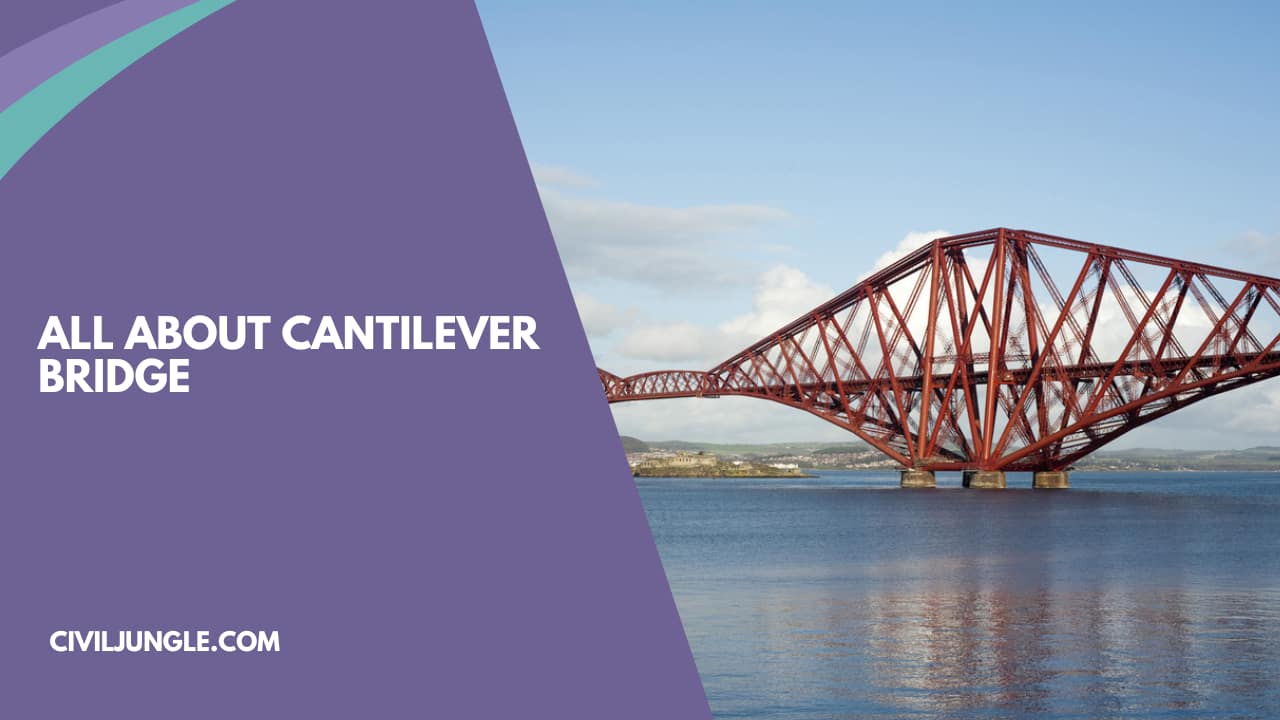
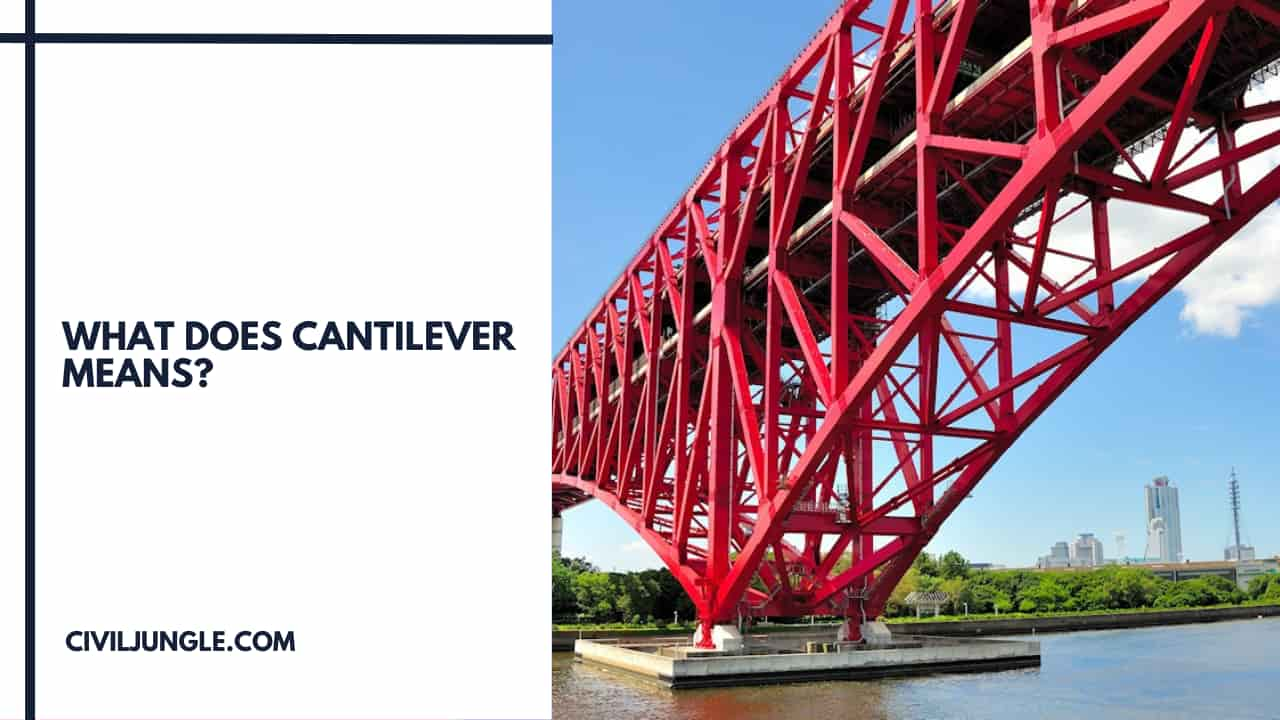

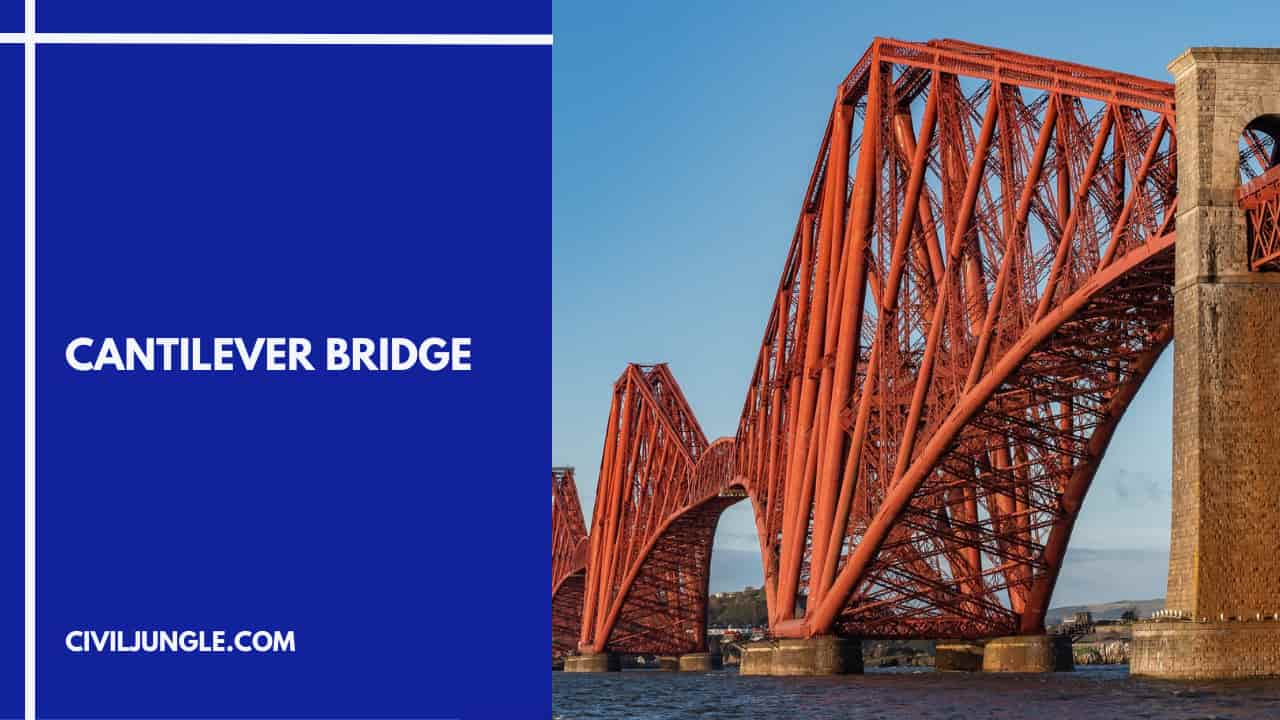
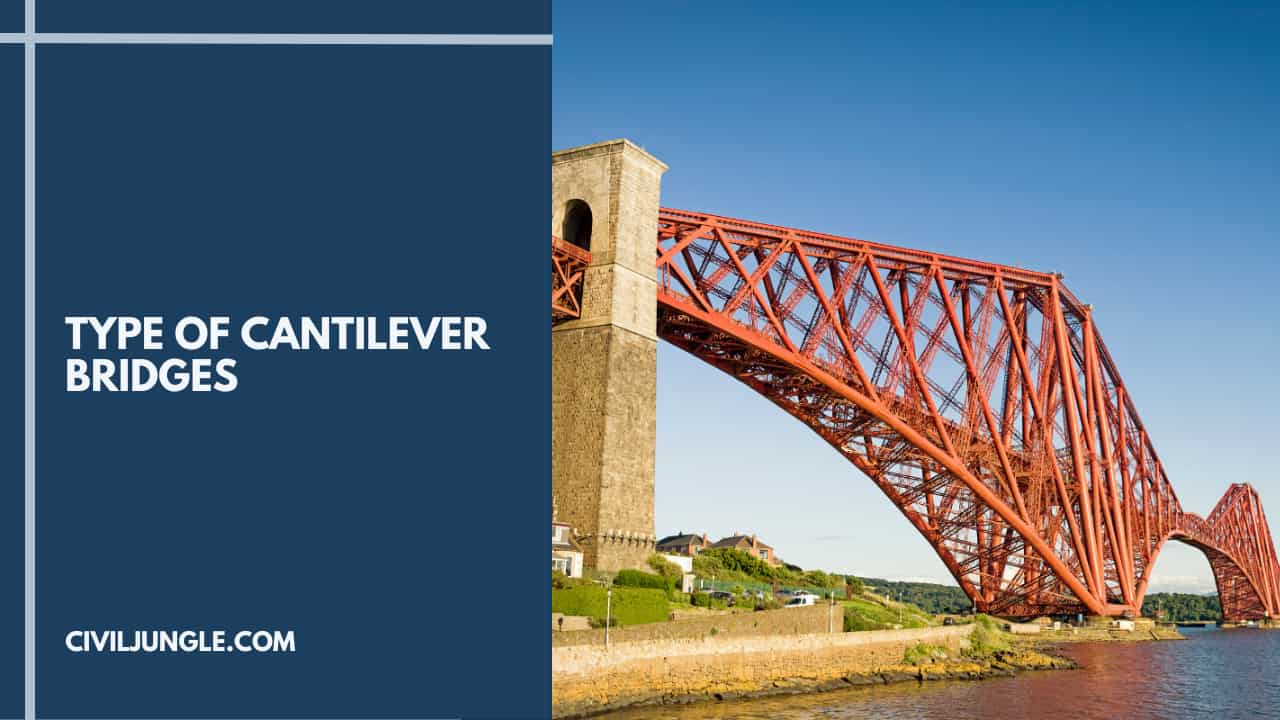
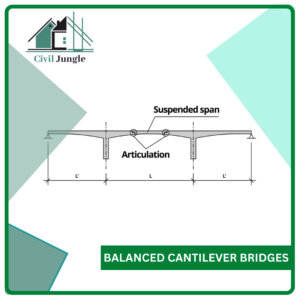
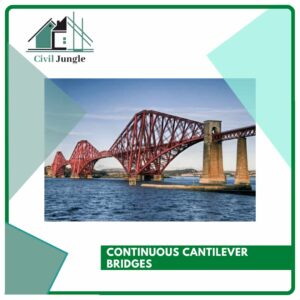
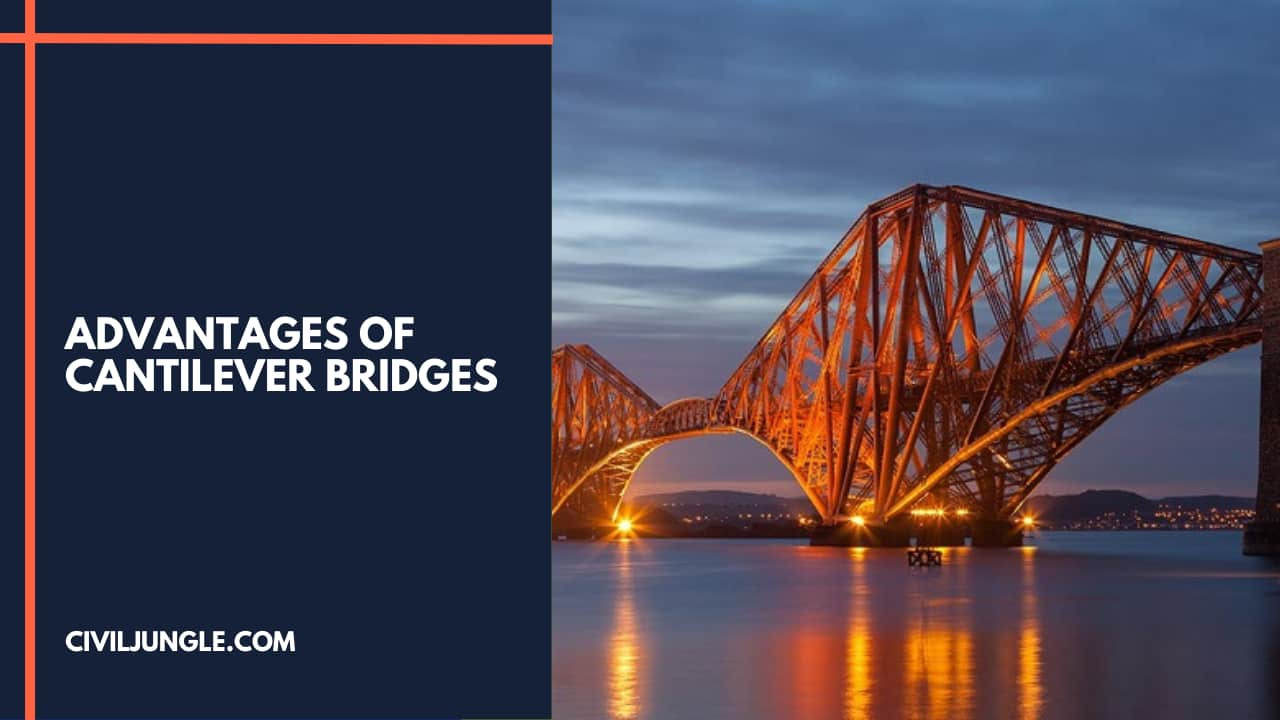

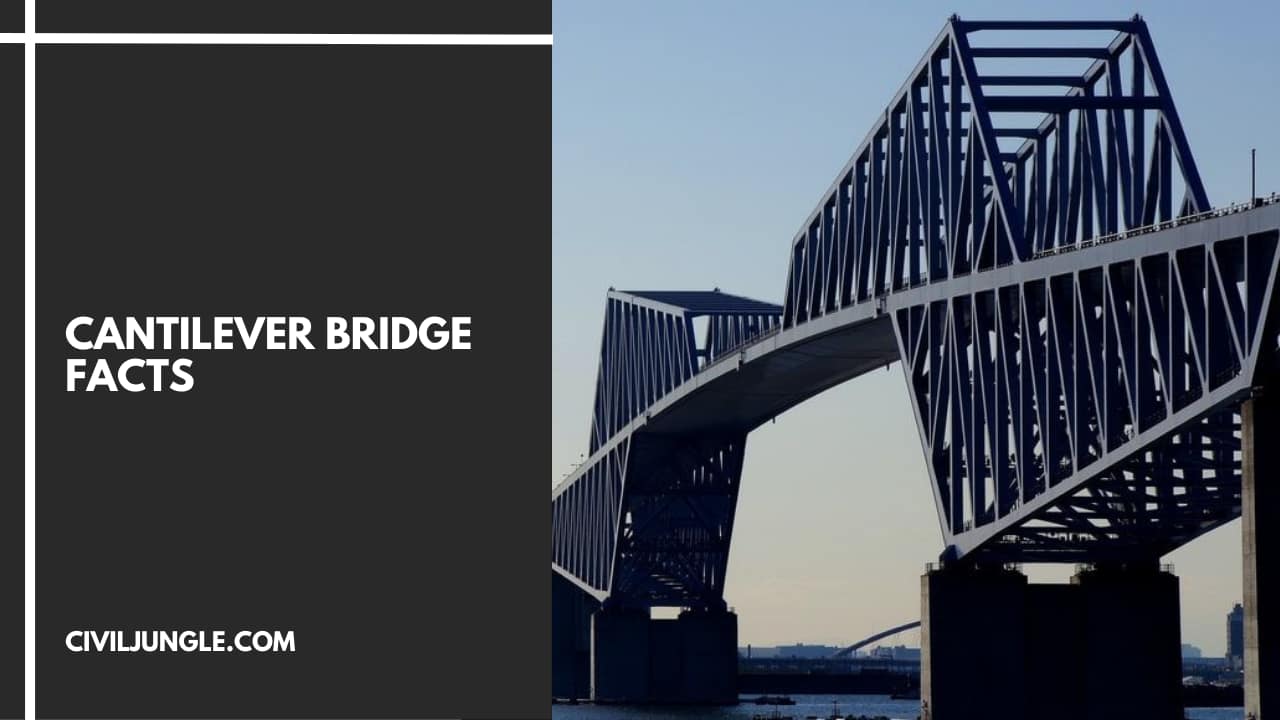

Leave a Reply